We’re living in an exciting era where green cars are transforming how we think about transportation. As environmental concerns grow and gas prices fluctuate, more drivers are discovering that eco-friendly vehicles aren’t just better for the planet—they’re smarter for our wallets too.
The automotive industry has made incredible strides in developing sustainable transportation options that don’t compromise on performance or style. From sleek electric vehicles that deliver instant torque to efficient hybrid models that maximize every drop of fuel, green cars now offer something for every driver and budget.
Whether you’re considering your first eco-friendly vehicle or looking to upgrade your current ride, understanding the green car industry can help you make an well-informed choice. We’ll explore the latest technologies, compare costs, and show you how switching to a green car can benefit both your lifestyle and the environment.
What Are Green Cars and Why They Matter for the Environment
Green vehicles represent a groundbreaking shift in transportation technology that addresses our planet’s urgent need for cleaner mobility answers. Understanding these eco-friendly alternatives helps us make informed decisions that benefit both our wallets and the environment.
Defining Green Vehicle Technology
Electric vehicles (EVs) run entirely on battery power and produce zero direct emissions during operation. These cars use rechargeable lithium-ion batteries that can be charged at home or public charging stations, offering ranges of 200 to 400 miles on a single charge depending on the model.
Hybrid vehicles combine traditional internal combustion engines with electric motors to maximize fuel efficiency. Examples include the Toyota Prius and Honda Accord Hybrid, which can achieve fuel economy ratings of 50+ miles per gallon by switching between gas and electric power sources.
Plug-in hybrid electric vehicles (PHEVs) function as electric cars for short trips and switch to hybrid mode for longer journeys. Models like the Chevrolet Volt and Toyota Prius Prime offer 25 to 50 miles of all-electric range before the gasoline engine activates.
Hydrogen fuel cell vehicles generate electricity through a chemical reaction between hydrogen and oxygen, emitting only water vapor as exhaust. Cars such as the Toyota Mirai and Honda Clarity represent this cutting-edge technology that refuels in minutes rather than hours.
Alternative fuel vehicles use renewable energy sources including biodiesel, ethanol, and compressed natural gas. These options reduce dependence on petroleum while maintaining compatibility with existing refueling infrastructure in many regions.
Environmental Impact of Traditional Vehicles
Transportation accounts for approximately 29% of total greenhouse gas emissions in the United States, with passenger cars and light trucks contributing the largest share. Traditional gasoline-powered vehicles release carbon dioxide, nitrogen oxides, and particulate matter that contribute to air pollution and climate change.
Combustion engines produce an average of 4.6 metric tons of CO2 per vehicle annually based on typical driving patterns. This emission level varies depending on fuel efficiency, with gas-guzzling SUVs and trucks generating significantly higher carbon footprints than compact cars.
Air quality deterioration affects public health through increased rates of respiratory diseases, cardiovascular problems, and premature deaths. Urban areas with heavy traffic experience smog formation and elevated levels of harmful pollutants that disproportionately impact vulnerable populations including children and elderly residents.
Resource depletion concerns extend beyond fuel consumption to include the environmental costs of oil extraction, refining, and distribution. These processes generate additional emissions while also risking oil spills and habitat destruction in sensitive ecosystems worldwide.
Green cars dramatically reduce these environmental impacts by eliminating or significantly decreasing tailpipe emissions while often utilizing cleaner energy sources for power generation.
Electric Vehicles: The Most Popular Green Car Option
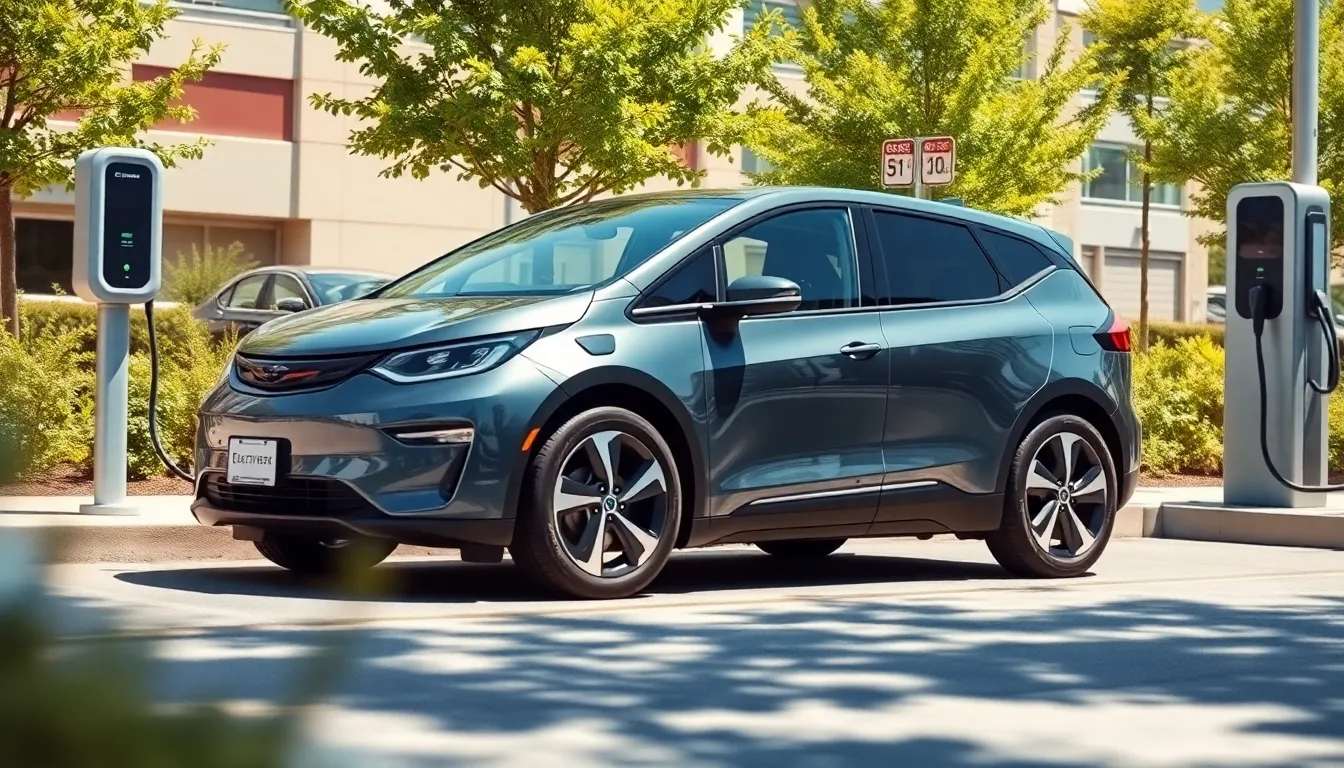
Electric vehicles dominate today’s green car market with impressive sales growth and widespread consumer adoption. We’ve witnessed a remarkable shift toward electric mobility as manufacturers expand their EV lineups and charging infrastructure improves nationwide.
Battery Electric Vehicles (BEVs)
Battery Electric Vehicles run entirely on electricity stored in rechargeable battery packs. These zero emission vehicles eliminate tailpipe pollution completely while delivering instant torque and quiet operation. Popular BEV models include the Tesla Model 3, Nissan Leaf, and Chevrolet Bolt EUV.
BEVs typically offer driving ranges between 150 to 400 miles per charge depending on battery size and vehicle efficiency. We see luxury models like the BMW iX and Mercedes EQS achieving over 300 miles of range. Charging times vary from 30 minutes for DC fast charging to 8 hours using standard home outlets.
Operating costs for BEVs average significantly lower than gasoline vehicles. Electricity costs roughly $0.12 per kWh nationally while maintenance expenses drop due to fewer moving parts. We estimate annual fuel savings of $1,000 to $2,000 for most drivers switching from conventional cars.
Plug-in Hybrid Electric Vehicles (PHEVs)
Plug-in Hybrid Electric Vehicles combine electric motors with gasoline engines for maximum flexibility. These vehicles run on battery power for daily commuting while offering gasoline backup for longer trips. Leading PHEV options include the Toyota Prius Prime, Honda Clarity, and BMW X5 xDrive45e.
PHEVs deliver electric only ranges typically between 20 to 50 miles per charge. We find this distance covers most daily commutes allowing drivers to operate emission free for routine trips. The gasoline engine activates automatically when battery power depletes or during high demand situations.
Fuel efficiency ratings for PHEVs often exceed 100 MPGe when operating in electric mode. Drivers experience reduced range anxiety compared to BEVs since gasoline backup eliminates charging concerns. We observe that PHEV owners who charge regularly achieve 70% to 80% electric driving in typical usage patterns.
Hybrid Cars: Combining Gas and Electric Power
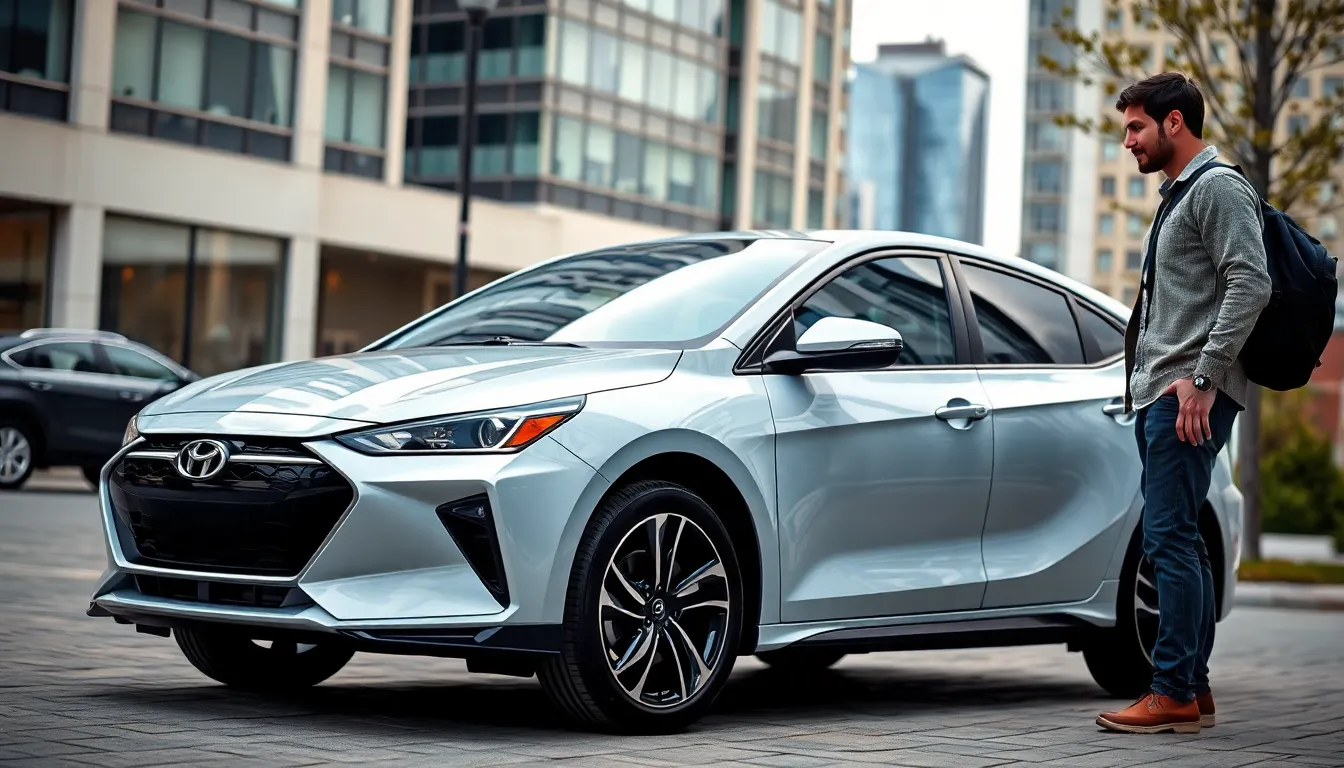
Hybrid vehicles represent the perfect bridge between traditional gasoline cars and fully electric vehicles. We’ll explore how this proven technology delivers exceptional fuel economy while maintaining the convenience drivers expect.
How Hybrid Technology Works
Hybrid systems seamlessly integrate an internal combustion engine with one or more electric motors to optimize fuel efficiency. The gasoline engine typically powers the vehicle during highway driving and high-demand situations, while the electric motor handles low-speed acceleration and city driving. Most hybrids use a nickel-metal hydride or lithium-ion battery pack that charges automatically through regenerative braking and engine operation.
Toyota’s Hybrid Synergy Drive exemplifies this technology by allowing the engine and motor to work independently or together. The system automatically switches between power sources based on driving conditions, speed requirements, and battery charge levels. During braking, the electric motor reverses its function to capture kinetic energy and recharge the battery pack.
Regenerative braking systems convert the vehicle’s momentum into electricity rather than wasting it as heat through traditional brake pads. This process extends brake life while continuously replenishing the hybrid battery without external charging. The sophisticated computer management system monitors dozens of variables every second to determine the most efficient power delivery method.
Benefits of Hybrid Green Cars
Fuel economy improvements in hybrid vehicles typically range from 20% to 50% better than comparable gasoline-only models. The 2024 Toyota Camry Hybrid achieves 51 mpg in city driving compared to 28 mpg for the standard Camry, representing an 82% improvement in urban fuel efficiency. We’ve found that most hybrid owners save between $800 and $1,500 annually on fuel costs depending on their driving patterns.
Maintenance costs for hybrid vehicles often run lower than traditional cars due to reduced engine wear and extended brake life. The electric motor assists the gasoline engine during acceleration, reducing stress on engine components and extending oil change intervals. Brake pads in hybrid vehicles can last 100,000 miles or more thanks to regenerative braking systems that handle most stopping power.
Environmental benefits include significantly reduced tailpipe emissions compared to conventional vehicles. Hybrid cars produce approximately 35% to 50% fewer greenhouse gas emissions than similar gasoline vehicles over their lifetime. The 2024 Honda Accord Hybrid emits 4.1 tons of CO2 annually compared to 6.8 tons for the standard Accord, based on 15,000 miles of driving per year.
Reliability statistics show hybrid vehicles matching or exceeding the dependability of conventional cars. Consumer Reports data indicates that hybrid systems typically last 200,000 miles or more with proper maintenance. Toyota has sold over 20 million hybrid vehicles globally since 1997, with many first-generation Prius models still operating reliably after 300,000 miles.
Hydrogen Fuel Cell Vehicles: The Future of Clean Transportation

Hydrogen fuel cell vehicles represent the next frontier in green car technology, offering zero emissions and rapid refueling capabilities. We’re witnessing growing interest in this promising clean transportation solution that could revolutionize how we think about sustainable mobility.
Understanding Hydrogen Technology
Fuel cell systems work by combining hydrogen and oxygen to generate electricity that powers electric motors. The chemical reaction produces only water vapor as a byproduct, making these vehicles completely emission free during operation. Unlike battery electric vehicles that store energy, hydrogen cars create their own electricity on demand through this electrochemical process.
Refueling takes just 3 to 5 minutes at hydrogen stations, similar to filling up a gasoline tank. This advantage addresses one of the main concerns about electric vehicles and their longer charging times. Most hydrogen fuel cell vehicles offer driving ranges between 300 to 400 miles per tank, providing the convenience drivers expect from traditional vehicles.
Storage involves high pressure tanks that hold compressed hydrogen gas at 10,000 PSI. These specialized carbon fiber tanks are designed to meet strict safety standards and undergo rigorous testing. The hydrogen itself is the most abundant element in the universe, though it must be produced and purified for automotive use.
Production methods for hydrogen include electrolysis, steam reforming, and renewable sources like wind and solar power. Green hydrogen produced through renewable energy electrolysis offers the cleanest pathway, creating a truly sustainable fuel cycle. Current hydrogen costs range from $13 to $16 per kilogram at retail stations, equivalent to about $4 to $5 per gallon of gasoline in energy content.
Current Hydrogen Car Models
Toyota Mirai leads the hydrogen vehicle market with its second generation model offering 402 miles of EPA rated range. The Mirai features a sleek sedan design and advanced fuel cell stack that’s 20% more compact than the previous generation. Pricing starts at approximately $50,000 before federal tax incentives, making it competitive with luxury electric vehicles.
Hyundai NEXO provides SUV versatility with 380 miles of range and spacious interior accommodations. This crossover utility vehicle combines hydrogen technology with practical family friendly features including all wheel drive capability. The NEXO achieves an EPA rating of 61 MPGe combined, demonstrating excellent efficiency for its size class.
Honda Clarity Fuel Cell was available through lease programs primarily in California until production ended in 2021. The Clarity offered 360 miles of range and helped establish hydrogen infrastructure in early adopter markets. Honda continues developing next generation fuel cell technology for future commercial applications.
BMW iX5 Hydrogen represents the latest development in hydrogen SUVs with pilot fleet testing beginning in 2022. This vehicle combines BMW’s luxury features with hydrogen fuel cell technology, targeting premium market segments. Limited production models are being evaluated in real industry conditions to gather data for broader market introduction.
| Vehicle Model | Range (Miles) | Starting Price | Body Style | Availability |
|---|---|---|---|---|
| Toyota Mirai | 402 | $50,000 | Sedan | CA, select markets |
| Hyundai NEXO | 380 | $60,000 | SUV | CA, select markets |
| BMW iX5 Hydrogen | 300+ | TBD | SUV | Pilot program |
Biofuel-Powered Cars: Running on Renewable Resources
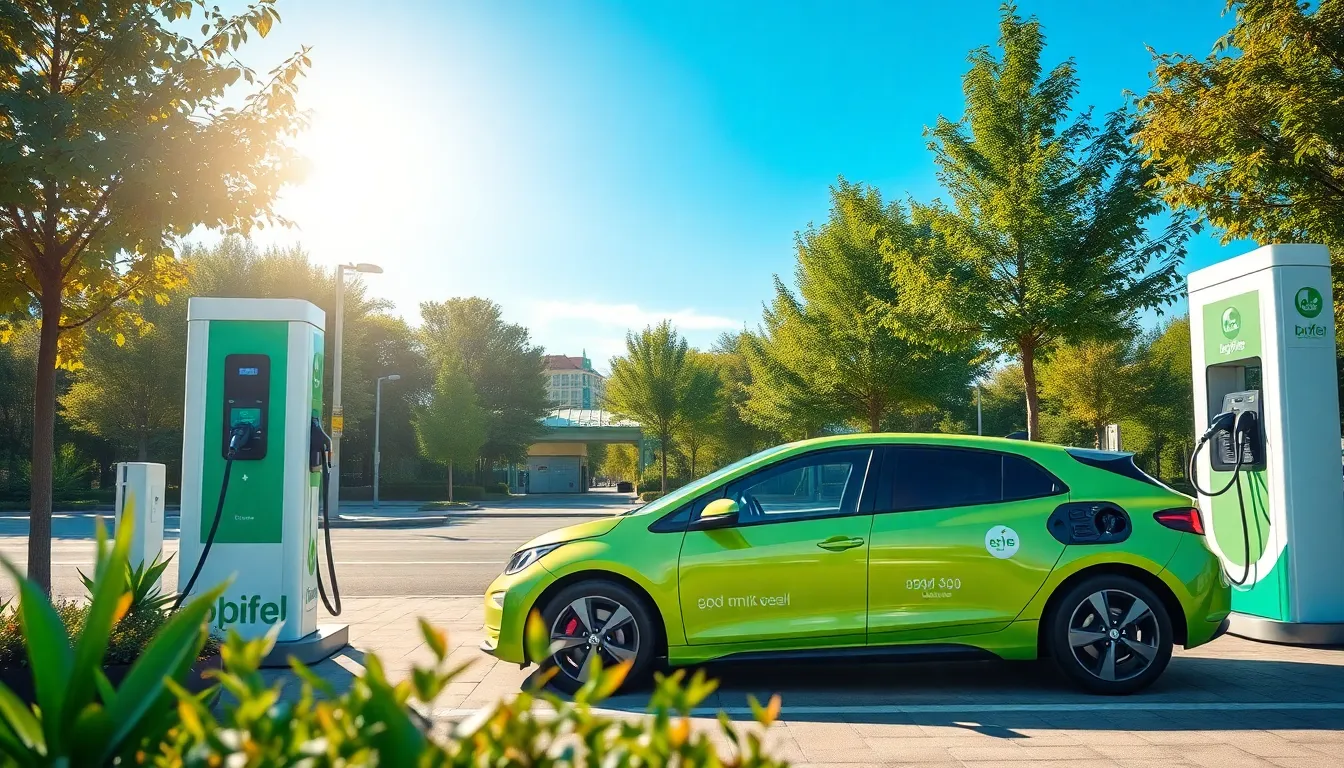
Biofuel vehicles offer another compelling path toward sustainable transportation by converting organic materials into clean-burning fuel. These green cars run on renewable resources derived from plants and organic waste, providing an immediate alternative to petroleum-based fuels.
Ethanol-Powered Vehicles
Ethanol cars use fuel made from corn, sugarcane, and other plant materials to power modified internal combustion engines. Most vehicles on the road today can handle fuel blends containing up to 10% ethanol (E10), while flex-fuel vehicles accommodate blends up to 85% ethanol (E85).
Flex-fuel vehicles represent the most common type of ethanol-powered car, with over 21 million currently registered in the United States. Popular models include the Chevrolet Silverado, Ford F-150, and Toyota Tundra, which automatically adjust their engine parameters based on the ethanol content in the fuel.
Performance benefits of ethanol include a higher octane rating of 113 compared to gasoline’s 87, resulting in improved engine performance and reduced knock. Ethanol burns cleaner than gasoline, producing 34% fewer greenhouse gas emissions when considering the entire lifecycle from production to consumption.
Cost considerations make ethanol attractive to many drivers, as E85 typically costs 10% to 30% less per gallon than regular gasoline. But, ethanol contains less energy per gallon, resulting in fuel economy that’s about 15% to 25% lower than gasoline-only operation.
Biodiesel Green Cars
Biodiesel vehicles run on fuel produced from vegetable oils, animal fats, and recycled cooking oil, offering diesel car owners a renewable fuel option. Most diesel engines can use biodiesel blends without modification, making this technology accessible to existing diesel vehicle owners.
Biodiesel blends come in various concentrations, with B20 (20% biodiesel, 80% petroleum diesel) being the most common commercial blend. Pure biodiesel (B100) works in many diesel engines but may require minor modifications in colder climates due to its higher gel point.
Environmental advantages of biodiesel include a 78% reduction in carbon dioxide emissions compared to petroleum diesel over the fuel’s lifecycle. Biodiesel produces virtually no sulfur emissions and reduces particulate matter by 47%, contributing to cleaner air quality in urban areas.
Production sources for biodiesel include soybeans, canola oil, palm oil, and waste cooking oil from restaurants. Advanced biodiesel can be produced from algae, which yields 10 to 20 times more fuel per acre than traditional crops like soybeans.
Vehicle compatibility extends to most diesel trucks, buses, and passenger cars manufactured after 2007. Popular biodiesel-compatible vehicles include the Volkswagen Jetta TDI, Chevrolet Cruze Diesel, and various Mercedes-Benz diesel models, with many fleet operators adopting biodiesel for their commercial vehicles.
Top Green Car Models Available Today
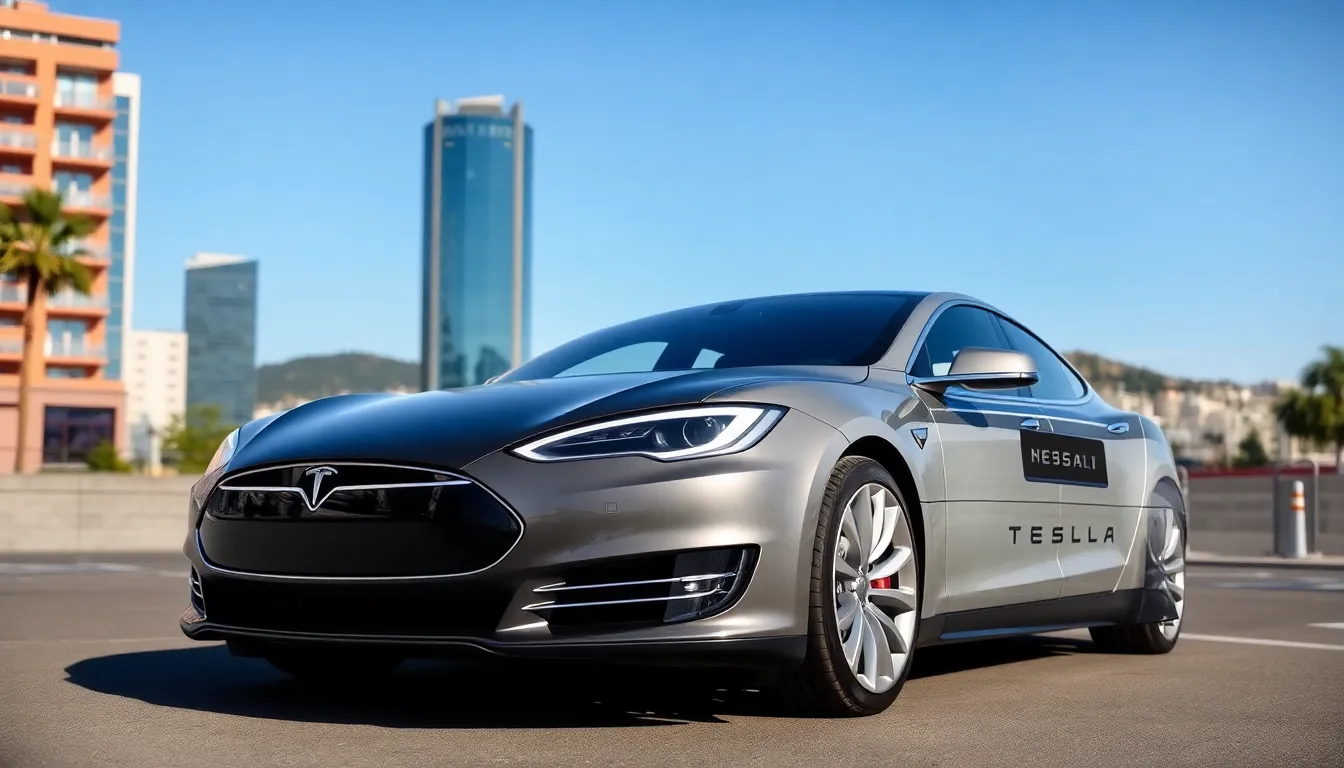
We’ve curated the most exceptional green car models that deliver outstanding performance, efficiency, and environmental benefits in today’s competitive market.
Best Electric Green Cars
Tesla Model S leads the luxury electric segment with its impressive 405-mile range and rapid 0-60 acceleration in just 3.1 seconds. This premium sedan combines cutting-edge technology with sustainable driving, offering Autopilot capabilities and over-the-air software updates that continuously enhance performance.
Nissan Leaf remains our top recommendation for budget-conscious buyers seeking reliable electric transportation. Starting at approximately $28,000, this compact vehicle delivers 149 miles of range and costs just $0.04 per mile to operate, making it one of the most economical green cars available.
BMW iX represents the pinnacle of electric luxury SUVs with its 380-mile range and innovative interior featuring sustainable materials. We appreciate its fast-charging capability that adds 90 miles of range in just 10 minutes, plus its advanced driver assistance features.
Ford Mustang Mach-E transforms the iconic muscle car legacy into an electric powerhouse delivering 314 miles of range. This crossover SUV offers multiple trim levels and proves that green cars can maintain thrilling performance with instant torque delivery.
Lucid Air Dream Edition sets new standards for electric vehicle luxury with its record-breaking 516-mile EPA range. We’re impressed by its spacious interior, premium materials, and ultra-fast charging speeds that can add 300 miles in just 20 minutes.
Leading Hybrid Options
Toyota Prius Prime continues to dominate the hybrid market with its exceptional 114 MPGe rating and 44-mile electric-only range. This plug-in hybrid reduces fuel costs by up to 80% for typical commuters and qualifies for federal tax credits up to $4,502.
Honda Accord Hybrid delivers remarkable fuel efficiency at 48 mpg combined while maintaining the spacious interior and smooth ride quality of the standard Accord. We recommend this sedan for drivers who want hybrid benefits without compromising on comfort or performance.
Toyota RAV4 Hybrid offers the perfect combination of SUV utility and hybrid efficiency with its 40 mpg rating and standard all-wheel drive. This crossover provides 8.1 inches of ground clearance and 37.5 cubic feet of cargo space for active lifestyles.
Lexus ES 300h brings luxury and efficiency together with its 44 mpg rating and whisper-quiet cabin. We appreciate its premium interior appointments, smooth continuously variable transmission, and comprehensive safety features that make every drive comfortable.
Ford Escape Hybrid achieves an impressive 41 mpg in city driving while offering 33.5 cubic feet of cargo space. This compact SUV proves that hybrid technology works exceptionally well in versatile family vehicles without sacrificing practicality.
Cost Savings of Owning Green Cars
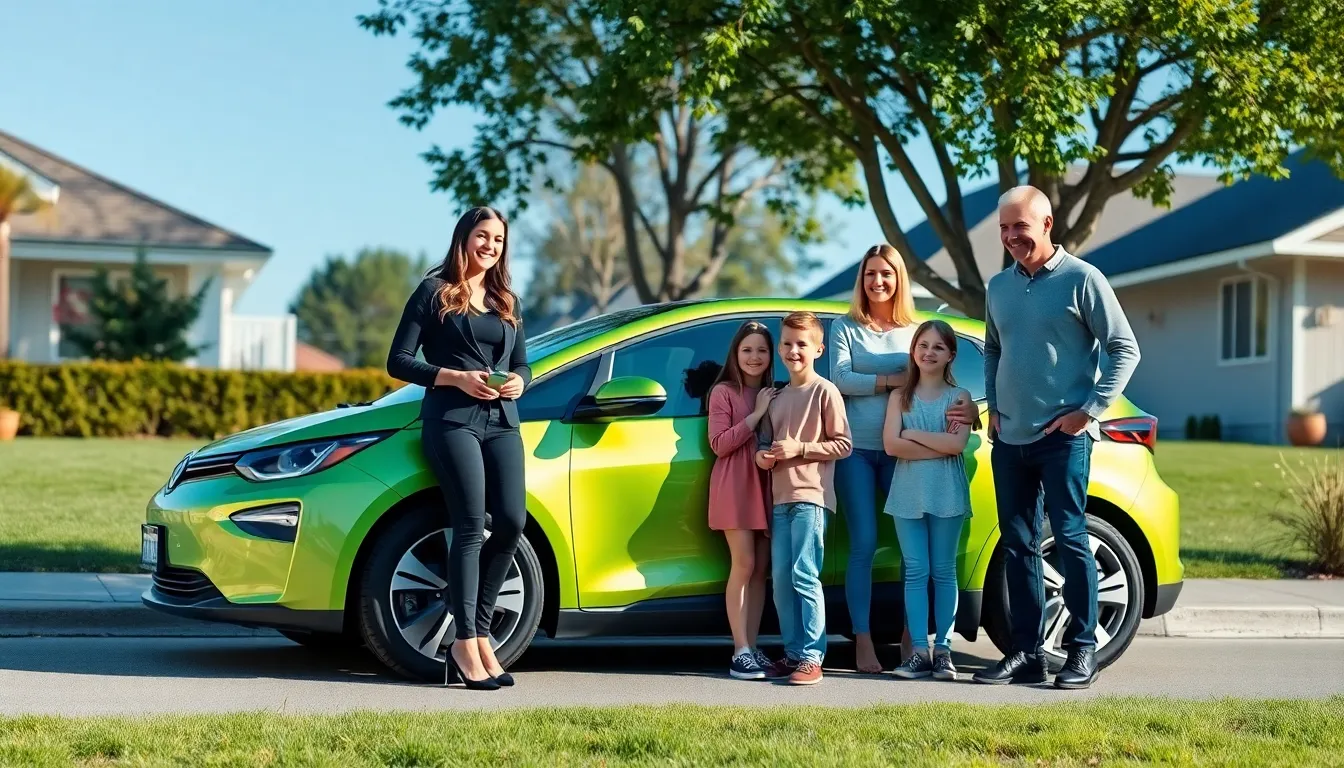
Switching to green vehicles delivers substantial financial benefits that extend far beyond environmental impact. We’ve analyzed the most important ways these eco-friendly cars reduce your long-term transportation costs.
Fuel Cost Reductions
Electric vehicles eliminate gas station visits entirely, replacing expensive petroleum with affordable electricity. We calculate that EV owners save between $1,000 to $2,000 annually on fuel costs compared to traditional gasoline vehicles.
Charging at home costs approximately $0.10 to $0.15 per kilowatt-hour in most U.S. regions. A typical EV requires 25 to 40 kWh to travel 100 miles, resulting in fuel equivalent costs of $2.50 to $6.00 per 100 miles.
Hybrid vehicles achieve remarkable fuel efficiency improvements of 20% to 50% over conventional cars. The 2024 Toyota Camry Hybrid delivers 51 mpg in city driving, while the Honda Accord Hybrid reaches 48 mpg combined.
PHEVs offer dual savings opportunities through electric driving for daily commutes and efficient hybrid operation for longer trips. Owners who charge regularly achieve 70% to 80% electric driving, dramatically reducing gasoline consumption.
| Vehicle Type | Average Annual Fuel Cost | Potential Savings vs Gasoline |
|---|---|---|
| Electric Vehicle | $500-$800 | $1,000-$2,000 |
| Plug-in Hybrid | $600-$1,200 | $800-$1,500 |
| Standard Hybrid | $800-$1,400 | $400-$800 |
| Gasoline Vehicle | $1,500-$2,500 | Baseline |
Tax Incentives and Rebates
Federal tax credits provide immediate financial relief for green car purchases, with electric vehicles qualifying for up to $7,500 in federal incentives. We recommend checking manufacturer eligibility since some brands have reached federal credit caps.
State programs offer additional savings through rebates, tax credits, and purchase incentives ranging from $500 to $5,000 depending on your location. California leads with the Clean Vehicle Rebate Project, providing up to $7,000 for qualifying electric vehicles.
Local utility companies frequently offer cash rebates for EV purchases, with programs like Southern California Edison providing $1,000 rebates for electric vehicle buyers. Many utilities also provide discounted electricity rates for EV charging during off-peak hours.
Workplace incentives include employer-sponsored rebate programs and preferential parking for green vehicles. Some companies offer up to $2,500 cash incentives for employees who purchase qualifying electric or hybrid vehicles.
Sales tax exemptions apply in several states for electric and hybrid vehicle purchases. States like New Jersey, Connecticut, and Washington eliminate sales tax entirely on qualifying green cars, saving buyers thousands of dollars at the point of sale.
Environmental Benefits of Choosing Green Cars
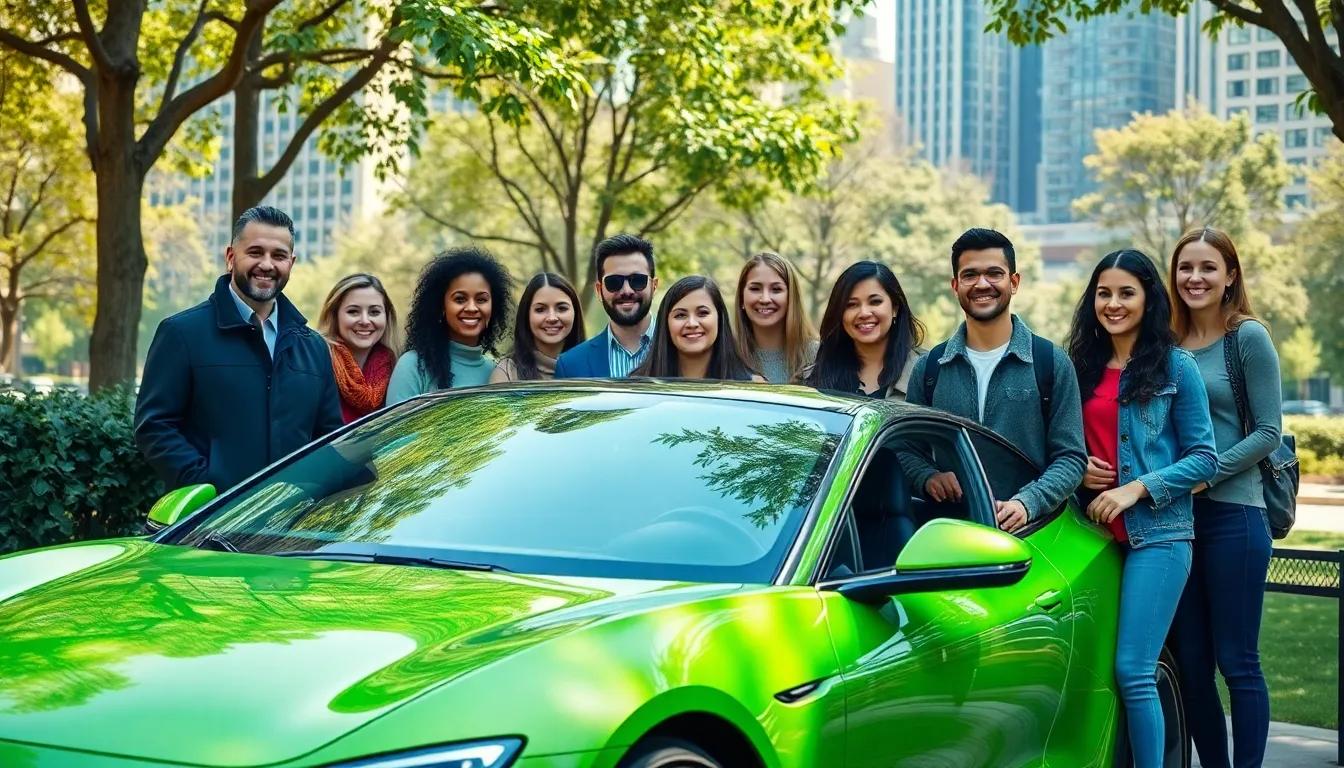
Green cars deliver measurable environmental advantages that extend far beyond individual savings. We’re witnessing a transformation in how transportation impacts our planet’s health.
Reduced Carbon Emissions
Carbon emissions drop dramatically when we switch from conventional vehicles to green alternatives. Electric vehicles produce zero tailpipe emissions, eliminating the 4.6 metric tons of CO2 that average gasoline cars release annually. Hybrid models like the 2024 Honda Accord Hybrid generate only 4.1 tons of CO2 per year compared to 6.8 tons from their conventional counterparts.
Transportation accounts for approximately 29% of total greenhouse gas emissions in the United States, making green car adoption crucial for climate goals. Battery electric vehicles powered by renewable energy sources can reduce lifecycle emissions by up to 70% compared to gasoline vehicles. Plug-in hybrid electric vehicles achieve similar reductions when operated primarily in electric mode, with owners typically driving 70% to 80% of their miles on battery power.
Hydrogen fuel cell vehicles offer another path to zero emissions, producing only water vapor as their byproduct. Models like the Toyota Mirai and Hyundai NEXO demonstrate how hydrogen technology can eliminate carbon emissions entirely while maintaining familiar refueling patterns. Biofuel vehicles contribute to emission reductions by utilizing carbon-neutral fuel sources that absorb CO2 during plant growth, creating a closed-loop system.
Improved Air Quality
Air quality improves significantly in areas with higher green car adoption rates. Zero-emission vehicles eliminate harmful pollutants like nitrogen oxides, particulate matter, and volatile organic compounds that traditional engines release into our atmosphere. Cities with substantial electric vehicle deployment report measurable decreases in smog formation and respiratory irritants.
Hybrid vehicles reduce local air pollution by running on electric power during stop-and-go traffic conditions when emissions are typically highest. Their engines shut off at traffic lights and in parking lots, preventing unnecessary pollutant release in populated areas. This technology proves especially beneficial in urban environments where air quality directly impacts public health.
Public health benefits extend beyond immediate emission reductions. Studies indicate that widespread green car adoption could prevent thousands of premature deaths annually from air pollution-related illnesses. Children and elderly populations experience the most important health improvements as cleaner air reduces asthma triggers and cardiovascular stress. Green transportation creates healthier communities while protecting vulnerable populations from vehicle-related air pollutants.
Charging and Refueling Infrastructure for Green Cars
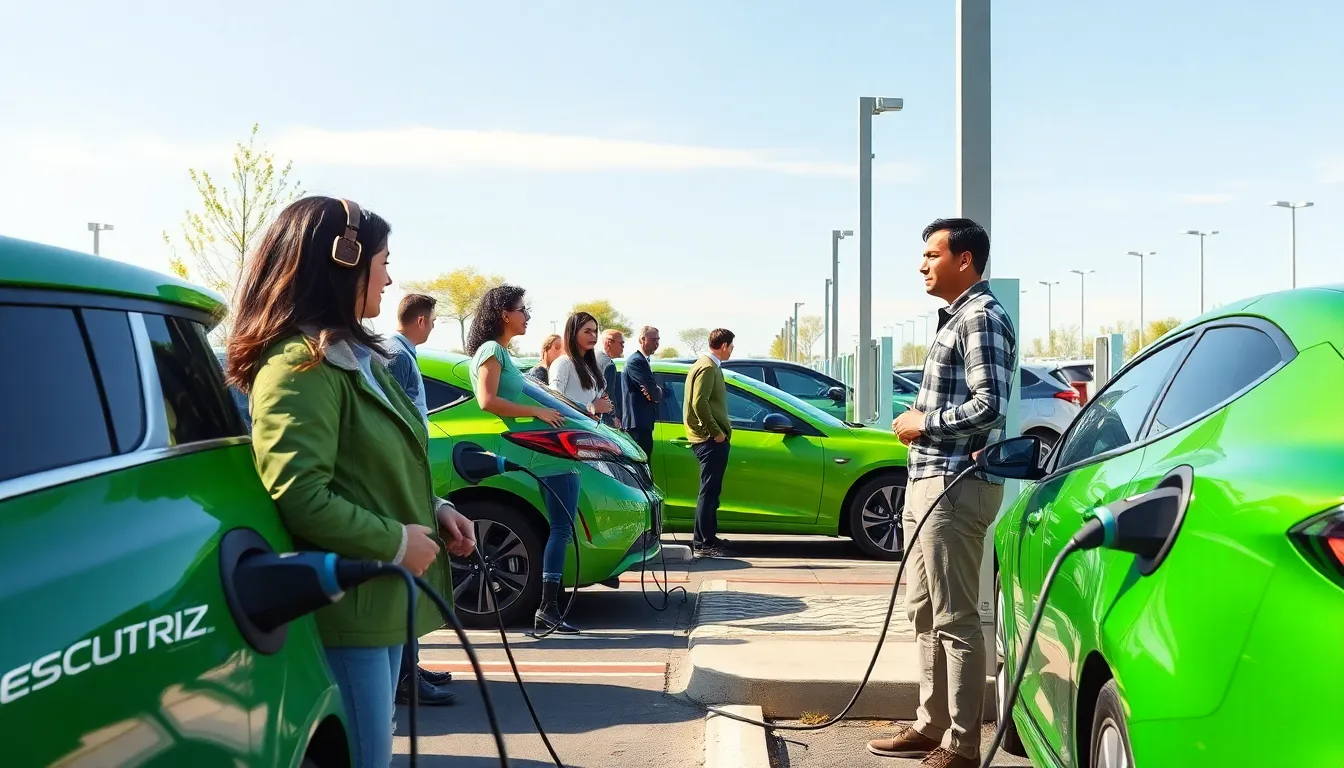
The success of green car adoption depends heavily on robust charging and refueling infrastructure. We’re witnessing rapid expansion of these networks across the United States as demand for eco-friendly vehicles continues to grow.
Electric Vehicle Charging Networks
Electric vehicle charging infrastructure has expanded dramatically with over 60,000 public charging stations now operating nationwide. We can categorize charging options into three main types: Level 1 (120V), Level 2 (240V), and DC fast charging (480V+). Home charging represents the most convenient option for daily use, with Level 2 home chargers adding 25 to 40 miles of range per hour of charging.
Public charging networks like Tesla’s Supercharger, Electrify America, and ChargePoint provide essential long-distance travel support. Tesla’s Supercharger network leads with over 2,000 locations across North America, offering charging speeds up to 250 kW. Electrify America operates more than 800 charging stations with plans to reach 1,800 locations by 2026.
Charging costs vary significantly by location and provider, typically ranging from $0.10 to $0.60 per kWh. Most public DC fast chargers can add 200 miles of range in 15 to 30 minutes, making long trips increasingly practical for EV owners.
Workplace charging programs have grown by 85% since 2020, with over 4,000 employers now offering charging stations. Many shopping centers, hotels, and apartment complexes are installing Level 2 chargers to attract eco-conscious customers and residents.
Alternative Fuel Stations
Hydrogen refueling stations remain limited but are growing in key markets like California, which hosts 64 of the nation’s 89 operational stations. We see refueling times comparable to gasoline vehicles at just 3 to 5 minutes per fill-up. Hydrogen stations typically cost $16 to $18 per kilogram, providing approximately 60 miles of driving range.
California leads hydrogen infrastructure development with plans for 200 stations by 2025. Toyota, Hyundai, and Shell are investing heavily in station expansion to support fuel cell vehicle adoption.
Ethanol refueling infrastructure benefits from existing gasoline station compatibility, with over 4,300 E85 stations currently operating nationwide. Flex fuel vehicles can use any ethanol blend from E10 to E85 at most standard gas stations. Midwest states like Iowa, Minnesota, and Illinois offer the highest concentration of E85 stations due to regional corn production.
Biodiesel stations number approximately 800 locations across the United States, primarily serving commercial fleets and diesel truck operators. B20 biodiesel blends work in most existing diesel engines without modifications. Agricultural regions maintain higher biodiesel station density, particularly in states like Texas, North Carolina, and California.
Compressed natural gas (CNG) stations serve both light-duty and heavy-duty vehicles at roughly 1,600 locations nationally. We observe strong CNG adoption in commercial fleet applications due to lower fuel costs and reduced emissions compared to diesel.
Government Incentives for Green Car Buyers
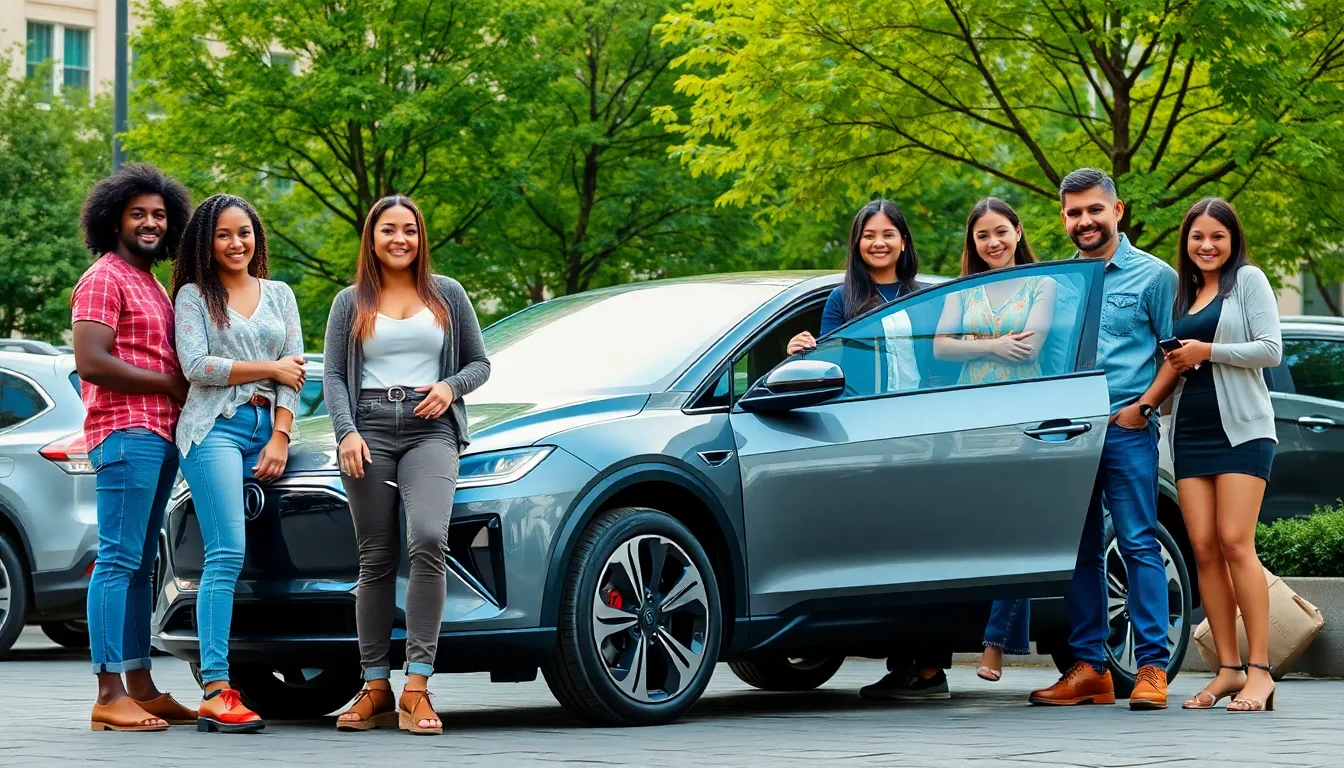
Purchasing a green car becomes even more attractive when you consider the substantial financial incentives available from government programs. We’ve compiled the most valuable federal and state benefits that can significantly reduce your upfront costs.
Federal Tax Credits
Federal tax credits provide immediate financial relief for green car buyers through the Internal Revenue Service. We can claim up to $7,500 in federal tax credits when purchasing qualifying electric vehicles, with the exact amount depending on battery capacity and manufacturer eligibility.
Battery electric vehicles with at least 5 kWh of capacity qualify for a base credit of $2,500, plus an additional $417 for each kWh above the 5 kWh threshold. Tesla and General Motors have reached their 200,000 vehicle cap and no longer qualify for federal credits, while manufacturers like Ford, BMW, and Hyundai still offer full credits.
Plug-in hybrid vehicles earn credits based on their battery size, typically ranging from $2,500 to $7,500 per vehicle. Popular models like the Toyota Prius Prime and Honda Clarity qualify for $4,502 and $7,500 respectively.
Income restrictions apply to these credits, with eligibility capped at $300,000 for joint filers and $150,000 for individual filers as of 2023. Buyers can now receive these credits at the point of sale through participating dealers, eliminating the need to wait until tax season.
Commercial buyers can access additional incentives through Section 30C credits for installing charging infrastructure. Fleet purchases qualify for separate commercial vehicle credits that can reach $40,000 per heavy duty truck.
State and Local Benefits
State programs offer diverse incentives that complement federal credits and vary significantly by location. California leads with the Clean Vehicle Rebate Program, providing up to $7,000 for battery electric vehicles and $4,500 for plug-in hybrids, with additional rebates for low income buyers.
New York’s Drive Clean Rebate offers up to $2,000 for electric vehicles, while Colorado provides $4,000 rebates for battery electric cars and $2,500 for plug-in hybrids. Massachusetts delivers rebates up to $2,500 through the MOR EV program, with enhanced benefits for income qualified residents.
Local utility companies frequently provide additional cash incentives and reduced electricity rates for EV owners. Pacific Gas & Electric offers $800 rebates for home charging station installations, while Austin Energy provides $2,500 rebates for electric vehicle purchases by residential customers.
High Occupancy Vehicle lane access represents a valuable non monetary benefit in states like California, Virginia, and Maryland. Single occupancy green vehicles can use HOV lanes during rush hour, potentially saving 30 to 60 minutes daily for commuters.
Registration fee reductions and parking benefits add to the savings in many municipalities. Washington state waives the $225 electric vehicle registration fee for the first two years, while cities like Portland and San Francisco offer free parking for electric vehicles in designated areas.
| State | EV Rebate Amount | PHEV Rebate Amount | Additional Benefits |
|---|---|---|---|
| California | Up to $7,000 | Up to $4,500 | HOV lane access, reduced registration |
| Colorado | $4,000 | $2,500 | Tax credit, HOV access |
| New York | $2,000 | $1,700 | Reduced registration fees |
| Massachusetts | $2,500 | $1,500 | HOV access, charging incentives |
| Washington | $2,500 | $1,500 | Fee waivers, HOV access |
Maintenance and Longevity of Green Cars
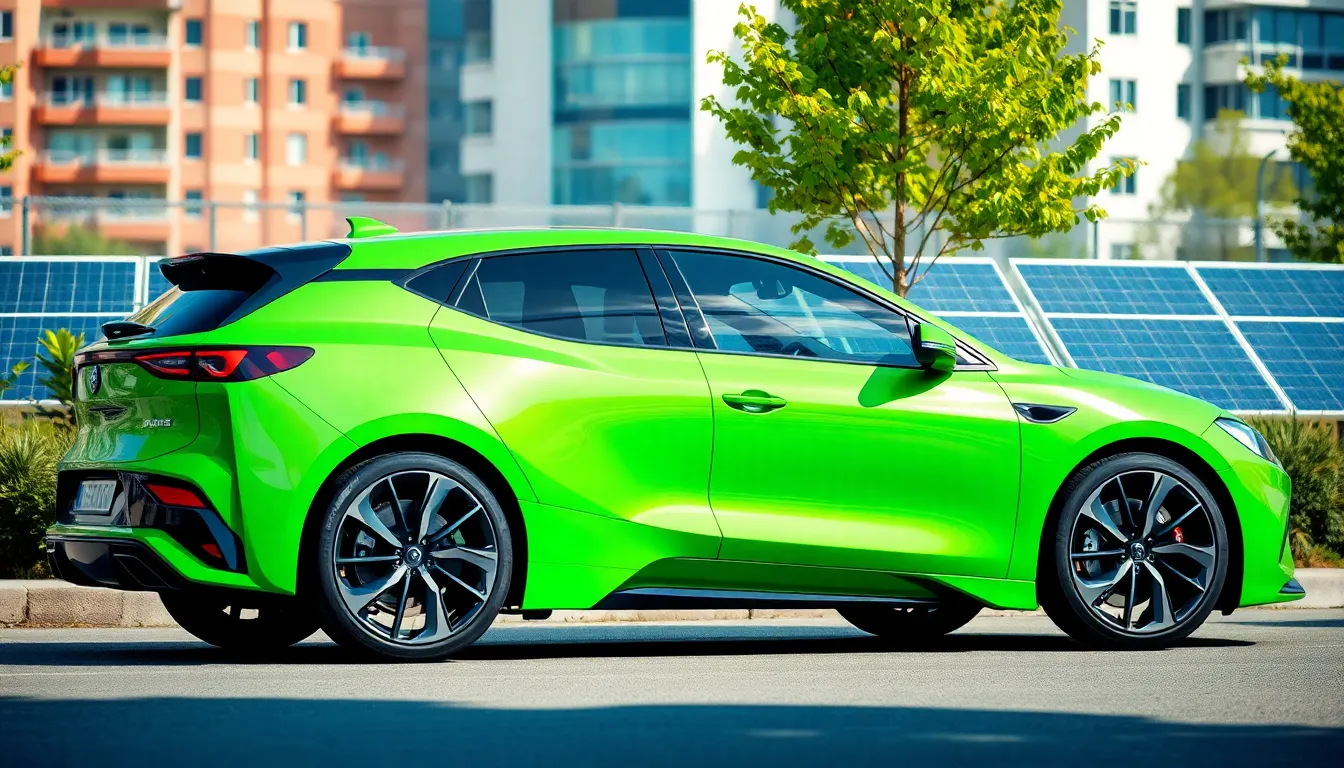
Green cars offer important advantages in maintenance requirements and long-term durability compared to conventional vehicles. We’ll explore how these eco-friendly vehicles can save you money and provide reliable service for years to come.
Lower Maintenance Costs
Green cars require fewer maintenance services than traditional gasoline vehicles, resulting in substantial cost savings over the vehicle’s lifetime. Electric vehicles eliminate the need for oil changes, transmission repairs, spark plug replacements, and exhaust system maintenance since they don’t have internal combustion engines.
Brake systems in green cars last significantly longer due to regenerative braking technology, which reduces wear on brake pads and rotors. Most EV owners replace brake pads every 100,000 to 150,000 miles compared to 25,000 to 70,000 miles in conventional cars.
Hybrid vehicles combine the best of both worlds when it comes to maintenance costs. While they still require some traditional services like oil changes, their engines run less frequently and experience reduced wear. Toyota hybrid owners report maintenance costs that are 20% to 30% lower than comparable gasoline-only models.
Annual maintenance expenses for electric vehicles average between $400 to $600, while traditional vehicles typically cost $1,200 to $1,500 per year. This difference adds up to savings of $8,000 to $11,000 over a 10-year ownership period.
Fewer moving parts in green cars translate to reduced component failure rates. Electric motors have only one moving part compared to thousands in internal combustion engines, resulting in fewer breakdowns and unexpected repair bills.
Battery Life and Replacement
Battery technology in modern green cars has advanced significantly, with most manufacturers offering warranties of 8 years or 100,000 miles on battery packs. Tesla Model S vehicles from 2012 still retain 80% to 85% of their original battery capacity after 200,000 miles of driving.
Replacement costs for EV batteries have dropped dramatically, from $15,000 to $20,000 in 2010 to $5,000 to $8,000 for most vehicles today. Industry experts predict these costs will continue declining as production scales increase and technology improves.
Hybrid vehicle batteries typically last 150,000 to 200,000 miles before requiring replacement. Toyota Prius owners commonly drive their vehicles beyond 300,000 miles with original battery packs, demonstrating exceptional longevity and reliability.
Battery degradation patterns show that most green cars lose only 2% to 3% of capacity per year under normal driving conditions. Cold weather climates may experience slightly higher degradation rates, but thermal management systems in newer vehicles minimize this impact.
Proper charging habits can extend battery life significantly in electric and plug-in hybrid vehicles. Keeping charge levels between 20% and 80% for daily use and avoiding frequent fast charging sessions helps maintain optimal battery health for longer periods.
Future Trends in Green Car Technology

Green car technology continues evolving at an unprecedented pace, with groundbreaking innovations reshaping our transportation industry. We’re witnessing revolutionary developments that promise to make eco-friendly vehicles even more efficient, intelligent, and accessible.
Autonomous Electric Vehicles
Autonomous electric vehicles represent the convergence of two groundbreaking technologies that’ll define the future of sustainable transportation. We’re seeing major automakers and tech companies investing billions in developing self-driving electric cars that can navigate roads without human intervention.
Tesla leads this integration with their Full Self-Driving (FSD) capability, already deployed across their electric vehicle lineup including the Model S, Model 3, and Model Y. The company’s neural network processes over 4 billion miles of real-industry driving data to improve autonomous capabilities continuously.
Waymo operates fully autonomous electric vehicles in select cities including Phoenix and San Francisco, demonstrating the viability of zero-emission self-driving transportation. Their fleet has completed over 20 million autonomous miles, proving that electric vehicles can handle complex driving scenarios without human oversight.
Commercial applications are expanding rapidly as companies like Amazon and UPS test autonomous electric delivery vehicles for last-mile logistics. These deployments reduce both carbon emissions and operational costs, with autonomous electric delivery trucks achieving 40% to 60% efficiency gains compared to traditional human-operated vehicles.
Safety improvements accompany environmental benefits since autonomous systems eliminate human error, which causes approximately 94% of serious traffic crashes according to the National Highway Traffic Safety Administration. Electric autonomous vehicles combine zero tailpipe emissions with enhanced road safety through advanced sensor systems and machine learning algorithms.
Advanced Battery Technology
Advanced battery technology stands as the cornerstone of green car innovation, with new developments dramatically improving range, charging speed, and overall vehicle performance. We’re experiencing breakthrough innovations that address the primary concerns consumers have about electric vehicle adoption.
Solid-state batteries promise revolutionary improvements in energy density and safety compared to current lithium-ion technology. Companies like QuantumScape and Toyota are developing solid-state batteries that offer 50% more energy density, enabling electric vehicles to achieve ranges exceeding 600 miles on a single charge.
Silicon nanowire batteries are entering commercial production with companies like Amprius Technologies delivering cells that provide 50% higher energy density than conventional lithium-ion batteries. These advanced batteries reduce charging times to under 15 minutes for 80% capacity while maintaining performance over 1,000 charge cycles.
Lithium iron phosphate (LFP) batteries gain popularity due to their enhanced safety profile and longer lifespan, with manufacturers like BYD and CATL scaling production globally. LFP batteries cost 20% to 30% less than traditional lithium-ion cells while offering improved thermal stability and cycle life exceeding 4,000 charges.
Battery recycling technologies are advancing rapidly as companies develop closed-loop systems to recover critical materials from end-of-life batteries. Redwood Materials and Li-Cycle are pioneering recycling processes that recover over 95% of lithium, cobalt, and nickel from used batteries, reducing environmental impact and material costs for new battery production.
Conclusion
We’ve explored how green cars represent a groundbreaking shift in transportation that benefits both our wallets and our planet. From electric vehicles delivering zero emissions to hybrids bridging the gap toward cleaner mobility these eco-friendly options offer practical answers for today’s environmentally conscious drivers.
The expanding infrastructure network makes green car ownership more convenient than ever while government incentives significantly reduce upfront costs. Lower maintenance requirements and fuel savings create long-term financial advantages that make these vehicles increasingly attractive investments.
As autonomous technology and advanced battery innovations continue evolving the future of green transportation looks brighter each year. We’re witnessing the beginning of a cleaner more sustainable automotive era that’ll reshape how we think about personal mobility for generations to come.
Frequently Asked Questions
What are green cars and why are they important?
Green cars are eco-friendly vehicles that use alternative energy sources or advanced technologies to reduce environmental impact. They include electric vehicles (EVs), hybrids, plug-in hybrids, hydrogen fuel cell vehicles, and biofuel-powered cars. They’re important because transportation accounts for 29% of U.S. greenhouse gas emissions, and green cars help combat climate change while improving air quality and public health.
How much money can I save with an electric vehicle?
Electric vehicle owners typically save $1,000 to $2,000 annually on fuel costs compared to gasoline vehicles. Additionally, EVs require less maintenance, with annual costs averaging $400-$600 versus $1,200-$1,500 for traditional cars. Over a decade, you could save $8,000-$11,000 in maintenance costs alone, plus substantial fuel savings.
What’s the difference between hybrid and plug-in hybrid vehicles?
Hybrid vehicles combine gasoline engines with electric motors but can’t be plugged in to charge. Plug-in hybrid electric vehicles (PHEVs) can be charged from external power sources and typically offer 20-50 miles of electric-only range. PHEVs provide more flexibility for daily electric driving while maintaining gasoline backup for longer trips.
Are there government incentives for buying green cars?
Yes, federal tax credits offer up to $7,500 for qualifying electric vehicles. State programs vary, with California offering up to $7,000 through their Clean Vehicle Rebate Program. Additional benefits include HOV lane access, reduced registration fees, and local utility incentives. These incentives significantly reduce the upfront cost of green car ownership.
How long do green car batteries last and what about replacement costs?
Modern EV batteries typically last 8-10 years or 100,000+ miles, with most manufacturers offering 8-year warranties. Battery replacement costs have decreased significantly and continue to drop. Many green car batteries retain 70-80% capacity after 8 years, and recycling programs are developing to reduce environmental impact and material costs.
Where can I charge or refuel my green car?
The U.S. has over 60,000 public EV charging stations, including Level 1, Level 2, and DC fast charging options. Most EV owners charge at home overnight. Hydrogen stations are primarily in California but expanding. Ethanol and biodiesel vehicles can often use modified versions of existing gas stations, making refueling convenient.
What are the environmental benefits of green cars?
Green cars dramatically reduce carbon emissions, with EVs producing zero tailpipe emissions and hybrids significantly lowering CO2 output. They improve air quality by eliminating harmful pollutants, contributing to better public health. Areas with higher green car adoption rates show measurable improvements in air quality and reduced pollution-related health issues.
How reliable are green cars compared to traditional vehicles?
Green cars are highly reliable, often lasting 200,000+ miles with proper maintenance. Hybrid vehicles have proven track records, with Toyota selling over 20 million hybrids globally since 1997. Electric vehicles have fewer moving parts, reducing potential mechanical failures. Many green car components come with extended warranties for added peace of mind.

